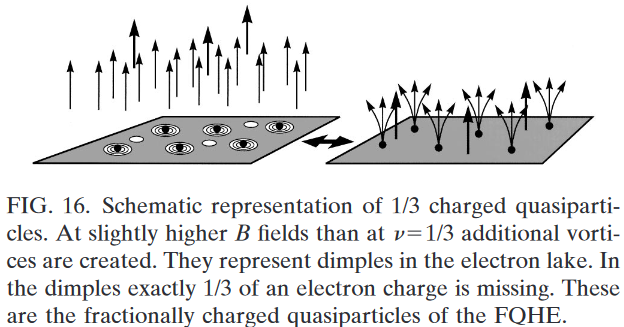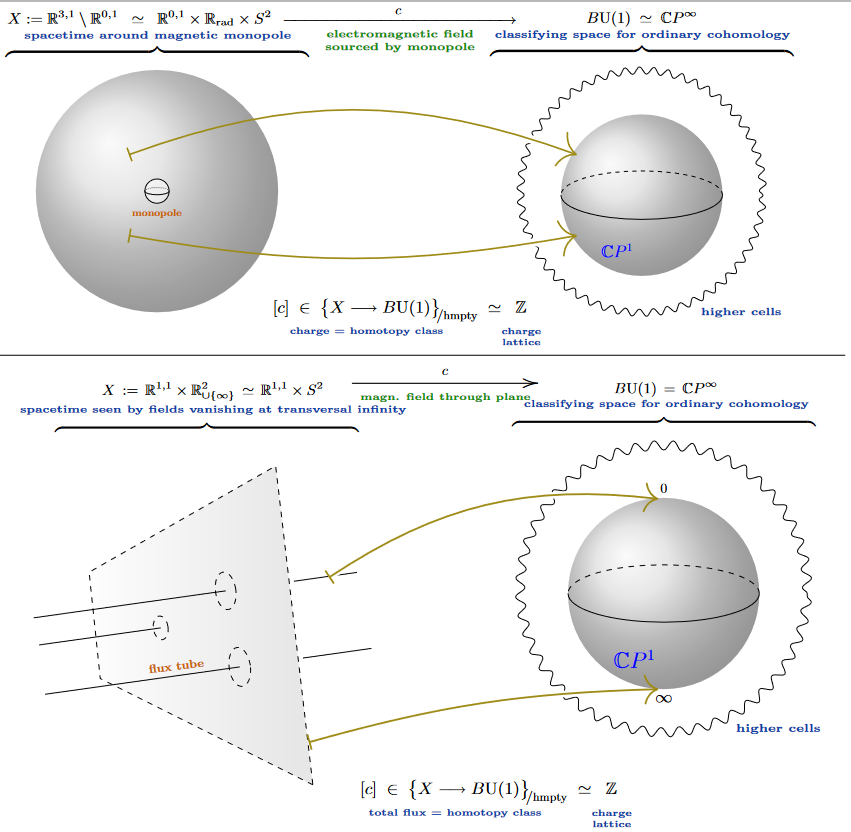Schreiber Abelian Anyons on Flux-Quantized M5-Branes
An article that we have written at CQTS:
-
Hisham Sati and Urs Schreiber:
Abelian Anyons on Flux-Quantized M5-Branes
download:
-
pdf (minor additions)
Abstract. While fractional quantum Hall systems provide the best experimental evidence yet of (abelian) anyons plausibly necessary for future fault-tolerant quantum computation, like all strongly-coupled quantum systems their physics is not deeply understood. But, generally a promising approach is to (holographically) realize such systems on branes in string/M-theory; and specifically an old argument by Hellerman & Susskind gives a sketch of fractional quantum Hall states arising via discrete light cone quantization of M5/M9-brane intersections.
Here we present a rigorous derivation of abelian anyon quantum states on M5MO9-branes (“open M5-branes”) on the discrete light cone, after globally completing the traditional local field content on the M5-worldvolume via a flux-quantization law compatible with the ambient 11d supergravity, specifically taken to be in unstable unstable co-Homotopy cohomology (“Hypothesis H”).
The main step in the proof uses a theorem of Okuyama to identify co-Homotopy moduli spaces with configuration spaces of strings with charged endpoints, and identifies their loop spaces with cobordism of framed links that, under topological light cone quantization, turn out to be identified with the regularized Wilson loops of abelian Chern-Simons theory.
Followup article:
-
Cohomotopy, Framed Links, and Abelian Anyons
(version rewritten for a more pure math audience)
Lecture notes:
Related articles.
Talk notes
the success of quantum physics has largely
been rooted in clever perturbation theory
assuming that quantum systems perform
small fluctuations
about a fixed background/mean-field
spectacular success e.g. in
| quantum electrodynamics | Landau's Fermi liquid theory |
but failure for e.g. in
| quantum chromodynamics | anyonic quantum materials |
| ordinary hadronic matter | e.g. fractional quantum Hall effect |
general non-perturbative theory of
strongly coupled/correlated quantum systems
has been largely missing
there are axioms for desiderata (AQFT, FQFT) but little handle on examples
there is computer simulation (lattice models) alongside real experiments
but one potential candidate for
general strongly coupled quantum theory
has been emerging from HE/QG physics:
working title: “M-theory”
general perspective:
quantum systems are modeled (“geometric engineering”)
onto the dynamics of mem-branes (whence “M”)
and higher dimensional “five-branes”
inside an auxiliary higher dim spacetime
popular approach (“holographic duality”):
study quantum dynamics on huge numbers
of branes via the gravitational field they source,
this reduces the problem to just classical gravity
eventually more ambitious approach (@ CQTS):
actually formulate the theory for small
at least in the relevant topological sectors
namely there was a glaring gap in the literature
with the fields on branes described only locally,
insufficient for seeing solitonic effects like anyons
but it is well known for the electromagnetic field that
its global definition requires a “flux quantization law”
needed to explain e.g. vortex solitons in superconductors
in recent years we developed math of flux quantization
to apply also to the subtle fluxes appearing on M-branes
&
pinpointed candidate flux quantization law for M-theory:
“Hypothesis H”, provably satisfying consistency checks
assuming Hypothesis H, we can derive solitons on branes,
engineering expected effects in quantum materials
in this article we thus quantize the flux on fivebranes &
demonstrate resulting (abelian) anyonic quantum states
The composite particle (CP) model of the fractional quantum Hall effect (from Störmer 1999):

flux quantization of magnetic monopoles & vortices in ordinary cohomology ( ) or 2-Cohomotopy ():

Last revised on August 22, 2025 at 07:40:29. See the history of this page for a list of all contributions to it.
